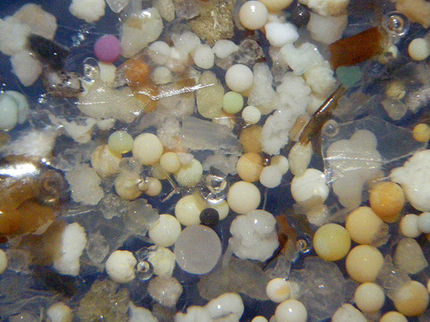Plastic instead of concrete: Ceresana examines the European market for plastic pipes
Pipes should last a long time, avoid that waste water or chemicals seep away, but at the same time be easy to handle. This is why plastic – instead of metal or concrete – is increasingly used in piping systems. “The price of raw materials, like steel or copper, does also play a crucial role,” explains Oliver Kutsch, CEO of Ceresana Research. The market research institute has scrutinized the European plastic pipe market from top to bottom.
Plastic in domestic applications
While two thirds of all sewers in Europe are still made of concrete or vitrified clay, plastic pipes are already more frequently used than metal pipes in home sanitary installations. The most popular material for plastic pipes is polyvinyl chloride (PVC) with a 45% share, followed by polyethylene with 36%. Ceresana Research expects that especially polypropylene will be increasingly used over the next years, whereas the use of PVC will stagnate.
Eastern Europe is catching up
Since the East European infrastructure networks have to be expanded, the demand for plastic pipes in this region is growing stronger than in the West. In Eastern Europe, sales of PVC pipes are still rising, while only better quality pipes made of polyethylene or polypropylene record growth rates on the relatively saturated markets in Western Europe. Ceresana Research expects that revenues from plastic pipes in Europe will rise to €9.7 billion by 2018.
Essential pipes
In Western Europe, about half of all plastic pipes are used for sewage disposal. In Eastern Europe, sewage disposal only accounts for one third of the demand for plastic pipes. Applications in drinking water and gas supply are of greater importance in this region. The largest share of the European plastic pipe market is accounted for by Germany with 14%, followed by Spain, France, Italy, and Turkey.
Informative market report
The Ceresana Research market study in two volumes analyzes in detail the plastic pipe market in 30 European countries. The separately analyzed fields of application are water and gas supply pipes as well as pipes for agriculture and industry. Further important fields include cable protection, geothermal systems, district heating, and household applications. A overview provides the most important information on the different pipe types, plastic grades, manufacturing processes, joining techniques, and legal situations.
Organizations
Related link
Other news from the department business & finance

Get the chemical industry in your inbox
By submitting this form you agree that LUMITOS AG will send you the newsletter(s) selected above by email. Your data will not be passed on to third parties. Your data will be stored and processed in accordance with our data protection regulations. LUMITOS may contact you by email for the purpose of advertising or market and opinion surveys. You can revoke your consent at any time without giving reasons to LUMITOS AG, Ernst-Augustin-Str. 2, 12489 Berlin, Germany or by e-mail at revoke@lumitos.com with effect for the future. In addition, each email contains a link to unsubscribe from the corresponding newsletter.

























































